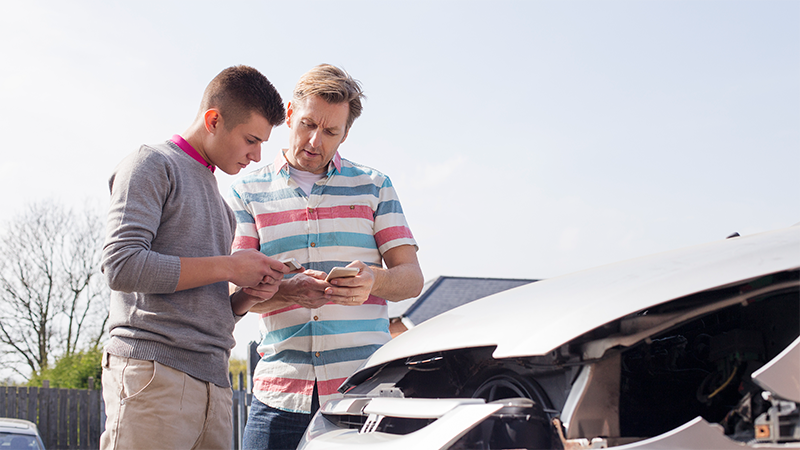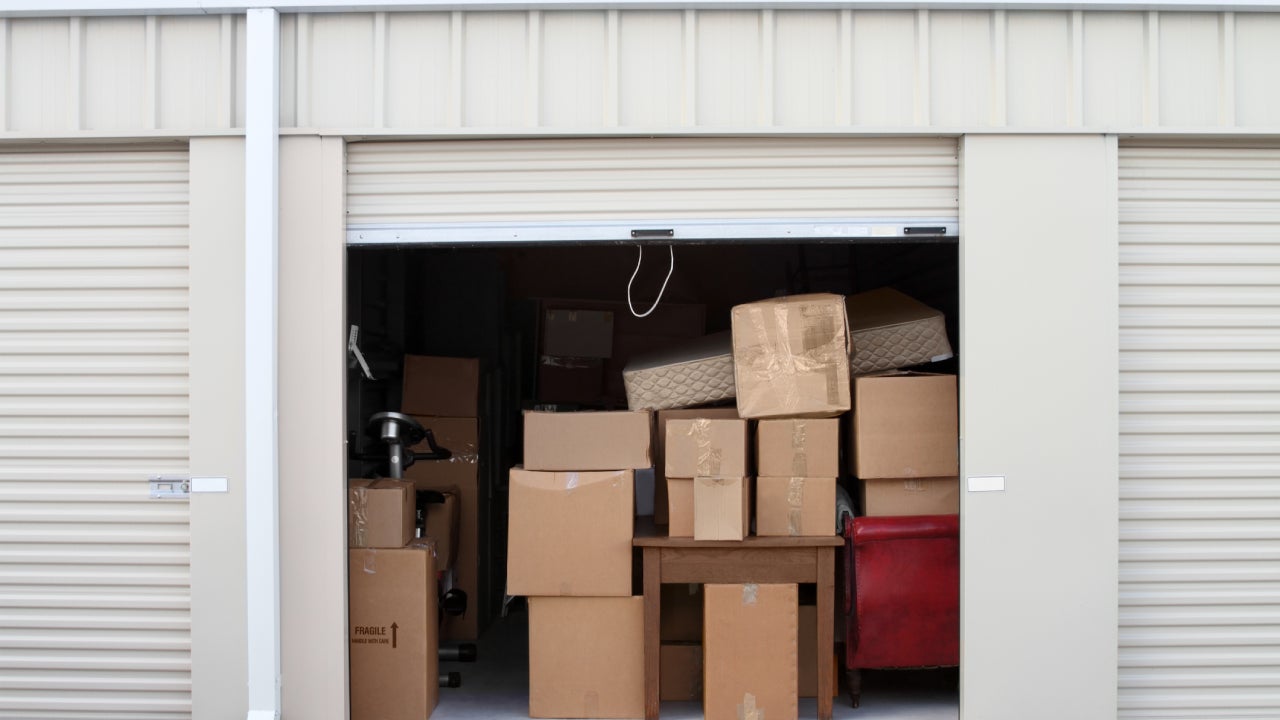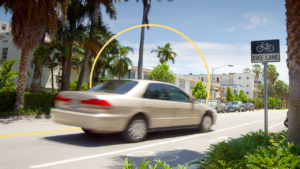Filing a car insurance claim: a step-by-step guide




Key takeaways
- After a car accident, gathering information at the scene is one of the most important steps in the claims process.
- Your car insurance company may recommend a preferred vendor for repairs, but you can use any body shop to repair your vehicle.
- Depending on the details of an accident and extent of the damage, you may choose to pay for repairs out of pocket rather than filing a claim.
Whether you were in an accident, had a break-in or a branch fell on your sunroof, car damage can be frustrating, and filing an insurance claim adds stress to an already tough situation. Although each company may have a slightly different claims process, most follow the same general steps. Even if you’ve never filed a claim, knowing what to expect can make the process less daunting if you ever need to — and ensure you get the full payout you’re entitled to.
When to file an insurance claim
An insurance claim may be the last thing on your mind immediately after an auto accident, but you actually don’t have to file a claim right away. Depending on the state you live in, you may have a longer time frame to file a claim, although filing sooner may help you get back on the road more quickly. Following an accident, you may want to contact your insurance agent and file a claim, especially if the damage is serious or injuries are involved.
Filing a car accident claim may financially protect you in a number of ways. Your insurance company may help by paying up to your policy limits on any property damages or injuries you caused while driving. It may also help you pay for any legal costs if you are taken to court. Depending on the details of your policy, your insurance company may also pay to repair damages to your own vehicle.
How to file an auto insurance claim
The process of filing an auto insurance claim starts at the scene of the accident. When looking at how to start a claim, there are a few steps you may want to take immediately after the accident up until your insurance claim is completed.
1. Gather the necessary information to help you file your claim
Before you leave the scene of the accident, most insurance experts recommend gathering certain critical information, like the other driver’s vehicle information, the insurance information for all parties, the contact information of any witnesses and anything else that may be relevant to the accident. Most experts also advise against assigning or admitting fault to yourself or others. Unless you live in a no-fault state, it will be up to the insurance companies and the police to determine who was at fault.
It’s also typically a good idea to take photos of the damage to both cars if you can. Do not, however, allow anyone else to take a photo of your driver’s license, which could leave you open to identity theft. It will likely be helpful to have the photos and information you gathered on hand when calling your insurance company to make a claim after the accident. It can also help to supplement the information from the police report.
2. Call your auto insurance company
If you can, call your insurer before you leave the scene of the accident, but don’t call until you are safe and have talked to the police and exchanged information with the other driver. Many insurance companies allow you to file a claim online or via a mobile app, but you may prefer to call and talk to a live person so you can be sure you’re doing everything they need you to do.
If your car is not driveable, your provider may call a tow truck if the police haven’t already. If you have rental car coverage, your insurer could start the process of getting you in another vehicle immediately.
3. Speak with a claims specialist
After ascertaining that you’re safe and taking down the details of the accident, the insurance agent will assign your case to a claims specialist or adjuster. This person will work with you through the car insurance claim process.
A claims specialist will answer any questions you have about the process and guide you through getting compensated for any damages up to your policy limits. If the other driver is at fault, the adjuster will typically represent you in dealings with that driver’s insurance company.
4. Assess the damage
Your claims specialist is the one who will determine the level of damage to your vehicle, including deciding if your car is totaled. You may be surprised at how little damage it takes to make your car not worth fixing, especially if it’s an older car. Your claims specialist may go see your car to assess and photograph the damage, or they may rely on the photos and reports from the repair facility to determine the level of damage.
There are several insurance endorsements, or add-ons, that may affect this part of the process. If you have a newer car, for example, and have new car replacement coverage, your insurer would pay to put you in a new car if your current vehicle is totaled. Gap insurance is another amendment that may also help you. If you have a loan on your vehicle, gap coverage pays the difference between the totaled amount of your new vehicle and your loan balance.
You may also be eligible for diminished claims value, which is the difference in the value of your car before and after the accident. For example, if you go to sell the car that was in the accident, you may get less for it from a buyer simply because it was in an accident, even though it’s been repaired. Your claims specialist will likely be able to tell you if you’re eligible for this coverage or not.
5. Obtain a repair estimate
After your claims specialist has looked at your car and determined that it’s not totaled, you’ll receive an estimate for repairing your vehicle from your insurer. Some insurers have vendors that they work with for repairs, and while working with these shops may make the process faster, you always have the right to choose any repair facility that you like.
Most insurance experts discourage drivers from approving any repairs until they have the company’s estimate in hand. You want to be sure that repairs can be paid for out of the amount that has been approved by your insurer.
6. Follow up on your claim and troubleshoot any problems
If you have a reliable car insurance company and an experienced claims specialist, the process should go smoothly. If it doesn’t, your company should act as your advocate throughout the process, especially if you’re dealing with the other person’s insurer as well.
If you run into problems, your first course of action is to call your company and find out if there is a customer care representative or ombudsman who is charged with handling complaints.
Hopefully, they will be able to work out a satisfactory solution for you.
If not, or if the amount you receive does not seem to you to be fair or in keeping with the coverage you have been paying for, there is an ultimate authority who can step in to help: your state’s department of insurance. You should be able to file a complaint with this agency (many states feature online complaint forms) if you feel that your claim hasn’t been handled correctly.
What happens after the claim is filed?
When you file a claim with your insurance company, you’ll set the claims process in motion. After your claim is filed, a few things will likely happen:
- Talk with an adjuster: The first step after you file a claim is to talk with the assigned claims representative. You’ll likely give a recorded statement of the accident.
- Get an estimate for repairs: You may actually meet your adjuster at a body shop, or you might be asked to submit an estimate for the repairs. You can do this from one of your company’s preferred body shops or choose a shop you’ve worked with previously.
- Receive an offer for compensation: After you’ve given your insurance adjuster the estimate, you’ll receive an offer for compensation for the damages. Usually, this matches the estimate, but it may be lower if the company feels that the estimate is too high.
- Repair your vehicle: Generally, if you use a company’s preferred body shop, the adjuster will pay the body shop for the repairs directly and you’ll only have to pay your deductible. If you use your own body shop, you’ll likely get a check for the agreed-upon amount and can then pay the shop yourself.
What happens if my car insurance claim is denied?
If your claim is denied, you have a few options. First, you may want to contact your insurance company and ask to have the case reviewed by another adjuster. You could also consider hiring a lawyer, depending on the circumstances. Keep in mind, though, that there are legitimate reasons for a company to deny your claim. Your policy could be lapsed, for example, or you don’t have the required coverage to pay for the damage that occurred.
Frequently asked questions
-
-
Filing a claim is up to you. If your accident only resulted in minor damage, like minimal damage to your bumper — especially if it was your fault — you may want to handle the damages out of pocket. Filing a claim, especially an at-fault loss, may increase the cost of your car insurance substantially.If the accident is not your fault, the other person’s insurance should pay the claim, so there should be no change to your policy. You can decide if you want to work directly with the other insurance company or let your car insurance company guide you through the process. Keep in mind, though, that you may not be able to get car insurance quotes and change companies if you have an open claim, even if it’s not your fault.
-
A car insurance claim may be settled as soon as the same day for simple claims, like a glass claim for a broken windshield. However, a more complex claim with multiple vehicles and injuries may take weeks or even months to finalize. Most states require insurance companies to settle claims within 30 days, though it can differ by state. If the claim takes longer than 30 days, the insurer might have to provide a written letter of explanation as to why the claim is taking longer than expected. To speed up your claims process, you may want to provide all accident details promptly, including the police report, schedule repairs immediately and set up direct deposit for claims payments so you do not have to wait for a claims check in the mail.
-
It depends. If there are any injuries or property damage, you may want to call your insurer for support and guidance during the process. Even if you are not deemed at fault for the accident, your insurance company may provide valuable insights while a claim is filed with the other person’s carrier. If the other person is uninsured or underinsured and you have relevant coverage, you may want to file a claim with your insurance company to pay for the damages upfront. If you have rental car coverage on your policy, contacting your insurance company may help you get a vehicle to drive if yours is unavailable.
-
Insurance rates are based on a number of factors, including your driving history. According to data provided by analytics company Quadrant Information Services, the nationwide average cost of a full coverage policy before an at-fault accident is $2,314 per year. After the at-fault accident, the average cost for the same policy rises to $3,283 annually. However, your rate may deviate from the average, depending on the accident’s severity along with your other underwriting characteristics such as your ZIP code, driving history, vehicle type and, in most states, your age, gender and insurance-based credit score.
-
You may also like

What to do with a damaged car after a hurricane

What is umbrella insurance and how much does umbrella coverage cost?

What is storage unit insurance?

How a speeding ticket impacts your insurance in Florida

